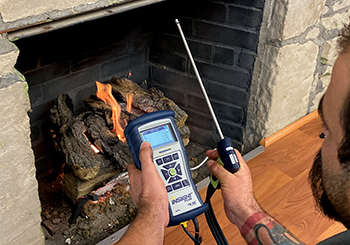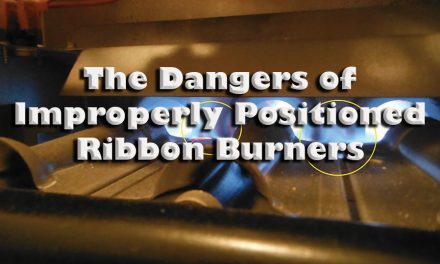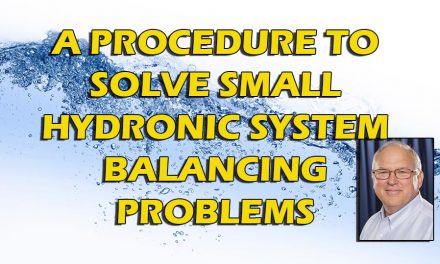Combustion And CO Safety Testing: Don’t Skip It
Combustion and CO safety testing are essential whenever fossil-fuel appliances are present or when an attached garage could be a CO source.
The latter is especially important in a home with pressure issues. Combustion testing verifies that appliances vent safely under various scenarios and helps you identify the causes of any combustion or venting issues.
Even basic combustion safety testing requires a high degree of knowledge and skill and is well beyond the scope of a magazine article.
Before you take responsibility for the safe operation of combustion equipment, make sure you’re adequately trained and certified, own the right tools, and know how to use them.

If you encounter CO while performing pressure diagnostics and you’re not equipped to address the underlying issues, here are some guidelines on how to handle the situation:
- At readings of 1 ppm to 9 ppm: Perform your testing and let the customer know that you found some low-level CO in their home that could indicate a safety issue. Offer to refer them to an expert to evaluate further.
- 10 ppm to 35 ppm: Perform your testing and advise customers of elevated CO levels. Ask if any children, elderly, or people with other health conditions have been experiencing symptoms. Advise that you will have an expert give them a call to set up an appointment.
- 36 ppm to 69 ppm: Open windows and doors. Recommend occupants seek fresh air. Turn off appliances and offer to make an immediate call to a knowledgeable combustion expert.
- 70 ppm+: Immediately evacuate yourself and request occupants do the same. Call 911 if anyone is unresponsive or suddenly ill. Turn off gas to the house at the meter or tank. Immediately call an expert.
Practical Remediation Strategies
Fixes are rarely exotic. Focus on high-impact work first.
- Seal supply ducts outside the conditioned envelope. Prioritize big seams, register boots, and supply plenums that cross unconditioned spaces. Big air leaks move numbers.
- Seal returns and return plenums. Return-side leakage outside the envelope often shows as whole-house positive pressure when the system runs; seal it to stop exfiltration.
- Address large exhausts with makeup air. For kitchen hoods with approximately more than 400 CFM, provide mechanical makeup air. For retrofit jobs consider passive or active makeup air solutions or recirculating hoods with filtration where allowed.
- Some owners with large kitchen hoods may want to consider a Heat Recovery Ventilator or Energy Recovery Ventilator (HRV or ERV). In humid climates, avoid HRVs and ERVs and opt for a dehumidifier on fresh air systems instead.
- Add return paths to pressurized rooms: transfer grilles, jumper ducts, or door undercuts sized to the measured need.
Retest after each corrective action and document pre/post numbers.













Recent Comments